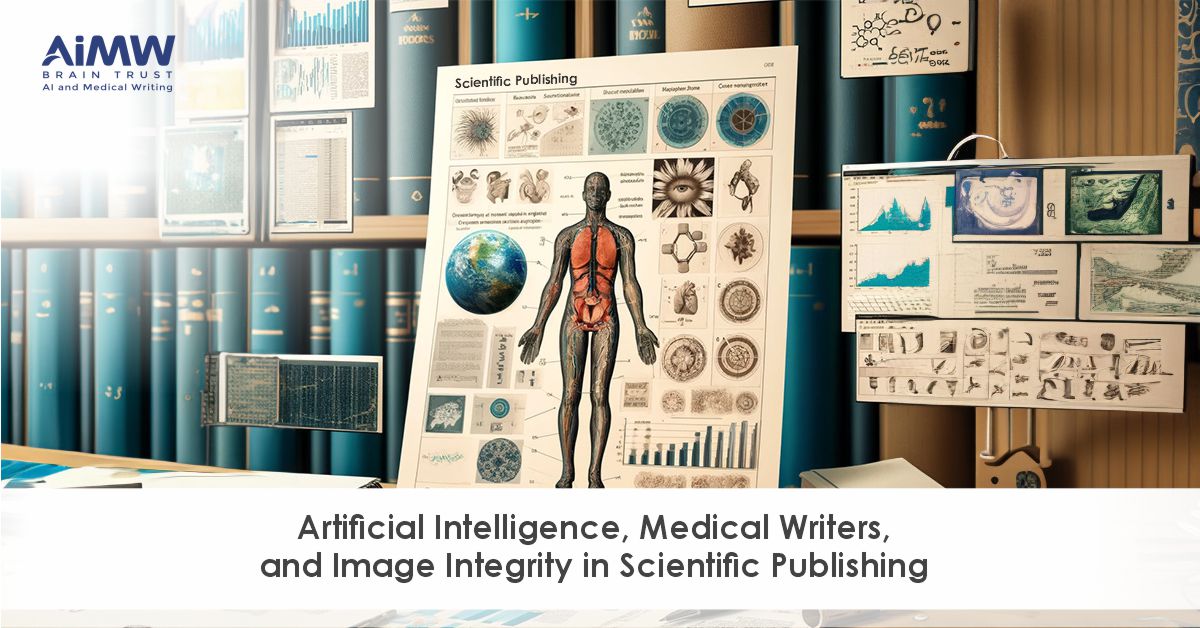In scientific publishing, the accuracy and integrity of visual data are as crucial as the written word. At Turacoz, we understand that the images within a scholarly article are not just supplementary but central to the narrative of scientific discoveries. These images help elucidate complex data, making the research accessible and verifiable by the scientific community. However, managing image integrity can be challenging, especially with the volume of data handled in contemporary research. Here’s how we are addressing these challenges, particularly through the innovative use of artificial intelligence (AI).
Understanding the Impact of Image Integrity
The integrity of visual data in academic papers is foundational to the credibility of scientific discourse. Any misrepresentation, whether unintentional or deliberate, can lead to misinterpretations or even allegations of data manipulation. With researchers increasingly relying on intricate imaging techniques and complex data sets, the potential for errors—such as duplicate images or inaccurate depictions—has also risen. Jana Christopher, a renowned image data integrity analyst, highlights a concerning statistic: between 20% and 35% of manuscripts are flagged for image-related issues. These problems, if undetected, can lead to manuscript rejection, delays in funding, and significant reputational damage for researchers and their institutions.
However, it is also important to note the impact an image/infographic/visual media has on the readability and citations of research papers.
The Consequences of Image Mismanagement
The repercussions of image integrity issues extend beyond initial publication. They can undermine future research, as subsequent studies might build on flawed data. In cases where errors are identified post-publication, lengthy investigations can ensue, impeding researchers’ ability to secure funding or publish further. Furthermore, this also negatively impacts the economic burden of the publication house.
Click Here:- From Likes to Lives: Media Channels in Effective Healthcare Communication
The Challenge of Image Verification
At the heart of the issue is the challenge of manually verifying the multitude of images submitted with each manuscript. In the fast-paced environment of scientific publishing, where editors and publishers are inundated with submissions, ensuring the accuracy of every image is a formidable task. This is compounded by the collaborative nature of modern scientific research, where images are shared and modified across teams and over time.
Key Challenges in Maintaining Image Integrity
High Volume of Submissions
The sheer number of manuscripts that editors and publishers handle can be overwhelming, making it difficult to scrutinize every image thoroughly.
Complexity of Images
Scientific advancements have led to the use of increasingly sophisticated imaging technologies across various fields. These include fluorescence microscopy in biology, complex geographical mapping in environmental studies, and dynamic imaging in materials science. Each type of image requires specific expertise to interpret accurately, which not all reviewers may possess. The risk here is twofold: not only subtle errors or manipulations may go unnoticed, but the true significance of an image might also be misunderstood or misrepresented in the publication, leading to potential misinterpretation of the research by the scientific community.
Collaborative Research Dynamics
Modern scientific research often involves multiple teams across different institutions and even countries, each contributing different components to the research, including data and images. This multi-source environment complicates the image management process, as it can lead to variations in image formatting, labeling, and quality. Additionally, coordination challenges can result in different versions of the same image being used or modified independently. Ensuring consistency and accuracy in such a dynamic setting requires robust communication and documentation protocols, which are often difficult to maintain across disparate teams.
Unintentional Errors vs. Deliberate Manipulation
Differentiating between unintentional errors in image handling and deliberate falsification is a critical but challenging aspect of scientific publishing. Unintentional errors might occur due to technical issues during image capture, processing anomalies, or simply human error. In contrast, deliberate manipulation involves intentionally altering images to produce misleading results. Identifying these issues requires a keen eye and a deep understanding of what constitutes normal variation vs. potential misconduct, a task that editorial teams must handle with great care to uphold research integrity.
AI can play a crucial role in enhancing image integrity in scientific publishing through various innovative approaches. Here are some key ways AI contributes to this field:
1. Detection of Image Manipulation: AI algorithms can be trained to detect alterations in images that might not be easily visible to the human eye. This includes identifying duplicated elements, alterations in image metadata, and inconsistencies that suggest tampering. These tools help in enforcing the integrity of visual data in scientific publications.
2. Image Forensics: AI can be used in image forensics to analyze the authenticity of photographs and figures in scientific papers. Techniques like reverse image search, pixel-level examinations, and pattern recognition can verify whether an image has been previously published or altered.
3. Automated Image Verification: AI systems can automatically verify the compliance of images with specific submission guidelines for journals. For instance, ensuring that images have not been excessively processed or altered beyond acceptable scientific standards.
4. Standardization and Quality Control: AI can assist in standardizing image formats and quality across submissions, ensuring consistency and reducing the likelihood of image-related errors. This can be particularly useful in fields like pathology or radiology, where image quality is paramount.
5. Education and Training: AI-driven tools can be developed to educate and train researchers on best practices for image handling in scientific publishing. These tools can provide real-time feedback and examples, enhancing learning efficiency.
6. Integration with Submission Systems: AI can be integrated into the manuscript submission systems used by journals to check image integrity as part of the submission process. This proactive approach can prevent issues before publication.
The Role of Medical Writers
Medical writers are integral to the scientific publication process, bridging the gap between raw research data and publishable content. Their expertise in scientific communication enables them to scrutinize the consistency and accuracy of images relative to textual content. Medical writers also play a crucial role in formatting and preparing images according to publication standards, ensuring that all visual data supports and enhances the textual narrative while maintaining ethical standards of reporting.
Ensuring Consistency and Accuracy
In their role, medical writers meticulously ensure that images are not only visually clear but also accurately represent the scientific data. They work closely with researchers to verify that each image is appropriately labeled, and its relevance is clearly explained within the context of the manuscript. This process includes verifying source data, checking image captions for accuracy, and ensuring that graphical representations are logically consistent with the accompanying text.
Educating Researchers
Beyond their writing responsibilities, medical writers also serve an educational role. They inform and instruct researchers on the best practices for image handling and data integrity. This includes guidance on how to avoid common pitfalls such as unintentional duplication, how to maintain raw data for verification purposes, and the importance of transparent documentation throughout the research process.
Quality Control
Before submission, medical writers can perform a thorough review of the manuscript, including a detailed check of all images for common issues such as duplication, inappropriate manipulations, or mislabeling. This pre-submission review helps catch errors that could lead to manuscript rejections or retractions.
Liaising with Editorial Teams
Medical writers can work directly with editorial teams to clarify any issues related to image integrity that may arise during the peer review process. They can help resolve questions about image provenance or modifications swiftly, facilitating a smoother review process.
Implementing AI Tools
The integration of AI tools in the publication process represents a significant advancement in managing and verifying the integrity of images. Medical writers, in collaboration with AI technologies, can oversee the automated scanning of images for anomalies that might indicate potential issues, such as unusual patterns or inconsistencies that could suggest manipulation. This proactive approach allows potential problems to be identified and addressed early in the publication process, thereby safeguarding the integrity of the scientific record.
Conclusion
At Turacoz, we believe in the power of technology and human expertise to maintain the highest standards of integrity in scientific publishing. Medical writers are invaluable in this process, helping to ensure that every image not only supports but also enhances the credibility and reliability of the scientific narrative. By addressing the challenges of image integrity head-on, with a combination of skilled human oversight and advanced technological tools, we are setting new standards for accuracy and trust in scientific literature. You can reach out to our team of dedicated professionals at info@turacoz.com to discover how our medical writing services can elevate your research, safeguard its integrity, and ensure its lasting contribution to the scientific community.






























